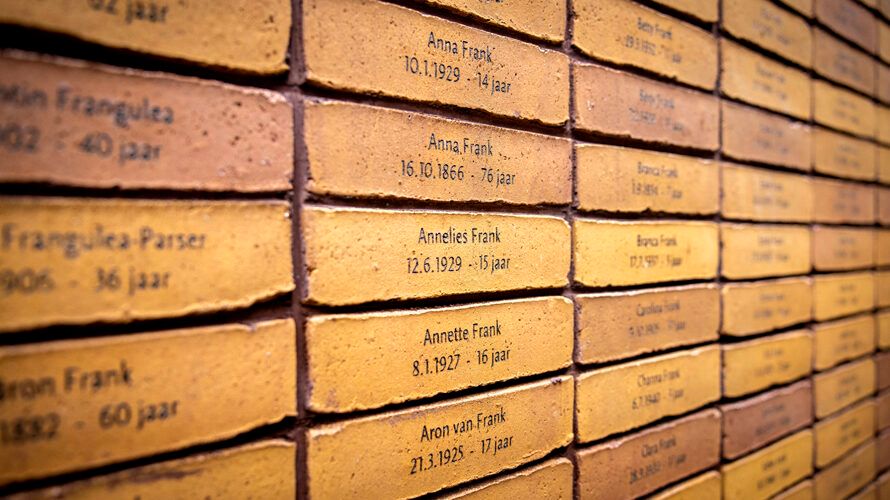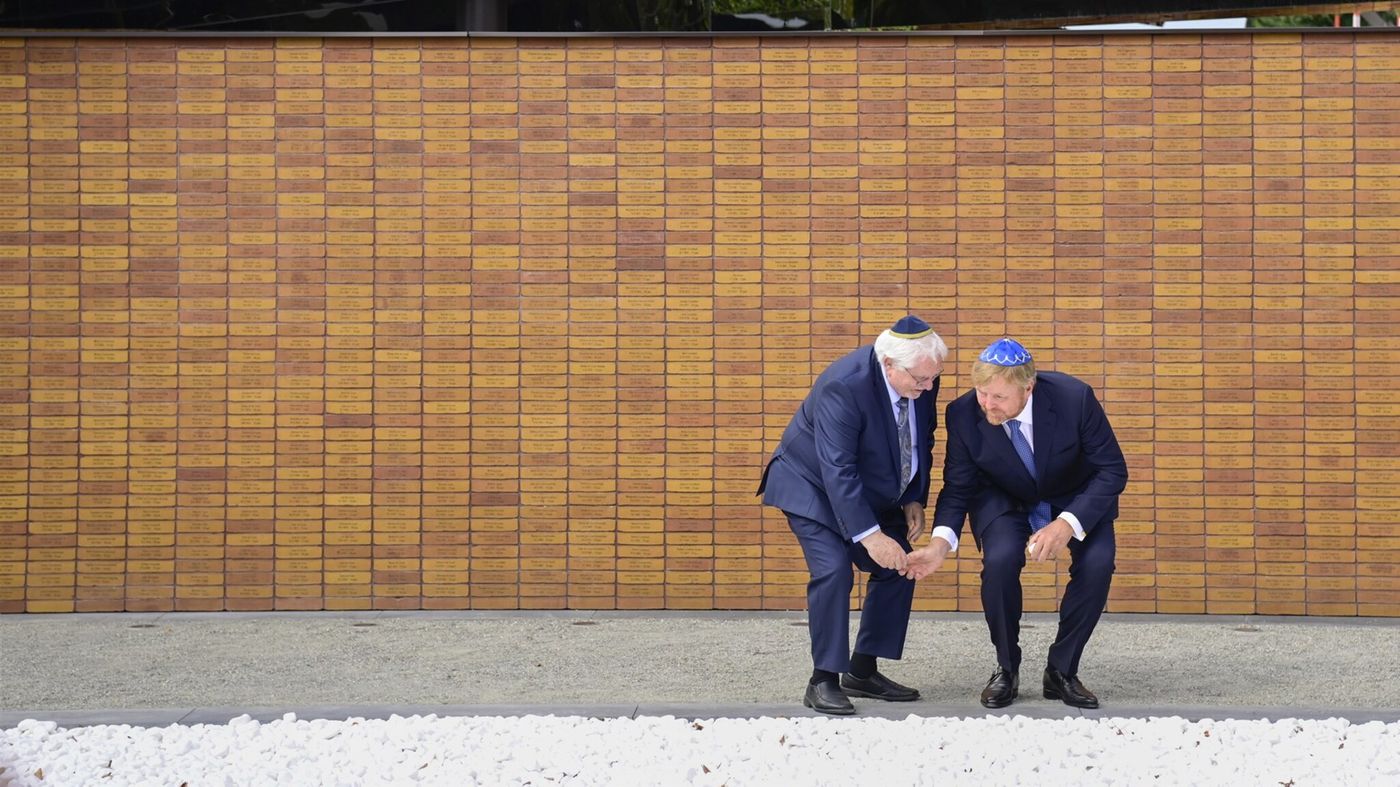Pandora's Archives Ten | Briefing: Amsterdam Orphan Street, National Holocaust Names Memorial Wall
This is an inconspicuous neighborhood on the edge of Amsterdam's old town, called Weesperstraat, with black car lanes, red bicycle lanes and gray sidewalks in an orderly manner. The red brick buildings are the main ones, but the new block-like buildings also occupy half of the field of vision. The scenery on the two days before the autumnal equinox is not too deserted, but the trees on the street have fallen a lot, the branches are quite sparse, and the city canals have also faded from the warmth of summer. Just standing next to the water can make people feel cold.
On this day, many people gathered on the west side of Orphan Street, waiting for the unveiling of the National Holocaust Namenmonument (Nationaal Holocaust Namenmonument). The so-called name monument is actually not a stone tablet, but a maze formed by many high brick walls. Each brick is engraved with a name. It is a Dutch Jew who was massacred in World War II but has no grave. This maze consists of 102,000 + 220 bricks, which is more than 100,000 lives. Visitors walk into this maze, looking at one name after another, birthday, age at the time of death, it is difficult not to suffer a certain psychological impact. The picture below is a corner of this maze. Some people died when they were 76 years old, and some died when they were 17 years old, 16 years old, 15 years old and 14 years old.
㊟ 102,000 are Jewish and 220 are Sinti and Roma, a non-discriminatory term that has long been known and commonly used as a derogatory term as Gypsy.

In order to construct a memorial maze with such a name, it is necessary to master enough archive information first. If you don’t know which Dutch Jews died in World War II and have no graves, more than 100,000 bricks will be useless. And what contributed to this national monument is the Jewish Victim Card Archive (Joodse Raadcartotheek) that we talked about in "Pandora's Archives II | Trust, Question, Archives ":
❝ The Victim Card File is a relic of the Holocaust in World War II, made before the victims were sent to death camps, each card records a lost life.❞
The Jewish Victim Card File was kept by the Dutch Red Cross after the war, and in 2018 the Red Cross transferred the entire Information Office file to the Dutch National Archives, including of course the Victim Card file. The Dutch media realized that it was only in January 2020 that the archives were "quietly transferred" to the National Archives, and they expressed a high degree of distrust of the "country" and did not believe that the National Archives was suitable as a victim card file manager. And this monument to the name is a response to public opinion's distrust, proving that the National Archives did not bury the victims' card files.

The original intention of this memorial wall is to provide a place for the families of the victims to gather and remember, but we can imagine that a generation will eventually wither with the passage of time, and there will be fewer and fewer people who have family affection for the deceased. One day this memorial wall will become a place of pure historical tribute. It’s hard to say when the memory and vigilance of the Holocaust will disappear, but we can be almost 100% sure that everything will disappear one day, and our efforts today are less about securing the future and more about creating meaning in the present.
▼ The concept of the entire memorial maze is a two-meter-high brick wall composed of four Hebrew letters, which means "memorial". The following is the design concept video of the memorial wall (no narration)
▼ The Memorial Wall was unveiled by the lesser-loved King Willem-Alexander

▼ Scenery during the project: Building a brick wall is a time-consuming and labor-intensive work, and it also makes people feel more sincere

Like my work? Don't forget to support and clap, let me know that you are with me on the road of creation. Keep this enthusiasm together!



- Author
- More